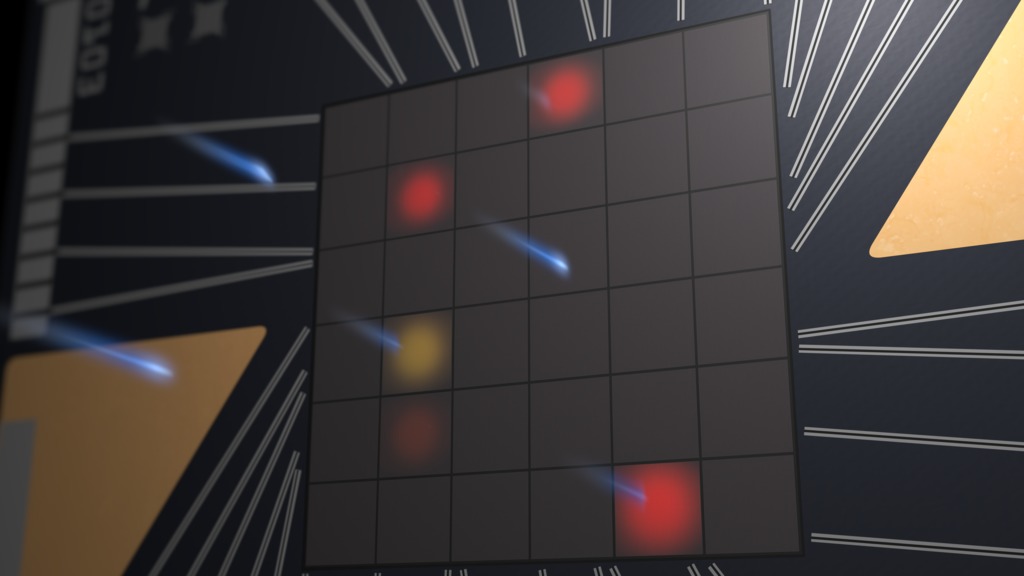NASA Goddard Spectrometer Launches on Hitomi Observatory

An artist's rendering of Hitomi in orbit.
Credit: JAXA
ASTRO-H, Japan's sixth satellite dedicated to X-ray astronomy, includes a state-of-the-art instrument for measuring X-ray energy and two telescope mirrors built at NASA's Goddard Space Flight Center in Greenbelt, Maryland. The observatory was carried into orbit aboard a Japan Aerospace Exploration Agency (JAXA) HII-A rocket on Feb. 17 from the Tanegashima Space Center in Kagoshima, Japan, and was subsequently renamed Hitomi, which translates to "pupil of the eye."
Hitomi is expected to provide breakthroughs in a wide variety of high-energy phenomena in the cosmos, ranging from the superheated material on the brink of falling into a black hole to the evolution of vast galaxy clusters. It is equipped with four advanced instruments covering a broad energy range, from low-energy, or "soft," X-rays around 300 electron volts (eV) to soft gamma rays up to 600,000 eV. For comparison, the energy of visible light spans about 2 to 3 eV.
X-rays arise from sources throughout the universe, wherever the particles in matter reach sufficiently high energies. These energies occur in numerous settings, like stellar explosions, extreme magnetic fields, or strong gravity. X-rays let us probe aspects of these phenomena that are inaccessible by instruments observing at other wavelengths.
Hitomi is capable of observing X-ray sources, like galaxy clusters and neutron stars, more than 10 times fainter than its predecessor, Suzaku, which operated from 2005 to 2015. To achieve this, Hitomi uses four co-aligned focusing X-ray telescopes and a suite of cutting-edge instruments that provide simultaneous coverage across the observatory's entire energy range.
Two identical Soft X-ray Telescopes include mirror assemblies provided by the Goddard team. Because X-rays can penetrate matter, the mirrors rely on what scientists refer to as grazing incidence optics. Much like skipping a stone across water, X-ray light skimming the surface of curved mirror segments is deflected toward the telescope's focal point.
One Soft X-ray Telescope focuses light onto an advanced wide-field camera provided by Japan, while the other directs it into the Soft X-ray Spectrometer (SXS), an instrument developed and built by the Goddard team working closely with colleagues from several institutions in Japan. Astronomers typically learn about the composition, temperature and motions of cosmic sources by spreading out the wavelengths of light into a rainbow-like spectrum. But astrophysicists have devised an alternative approach for measuring X-ray "colors," called microcalorimetry, that produces unprecedented spectral resolution without diluting their intensity as happens in previously employed approaches.
The SXS measures the heat generated when individual particles of light, called photons, strike the detector. The SXS precisely determines the energy of individual X-ray photons by measuring the small temperature increase made by each one. Because the changes are so small, the detector is cooled to -459.58 degrees Fahrenheit (-273.1 C) -- a fraction of a degree above absolute zero -- using a system developed in Japan and the U.S. Thanks to a series of nested vacuum containers called dewars, a supply of supercold liquid helium, and a sequence of mechanical and magnetic refrigerators, the SXS is expected to keep its cool for more than three years.
The observatory also carries two identical Hard X-ray Telescopes and their associated cameras, which image light from 5,000 to 80,000 eV, and two Soft Gamma-ray Detectors, which are sensitive to light from 60,000 to 600,000 eV but do not produce images. Both the telescopes and the instruments were provided by Japan.

This illustration shows the locations and energy ranges of Hitomi's science instruments and their associated telescopes.
Credit: JAXA/NASA's Goddard Space Flight Center

An unlabeled version of the above.
Credit: JAXA/NASA's Goddard Space Flight Center

The Goddard team provided identical mirror assemblies for both of the Soft X-ray Telescopes aboard Hitomi. Each is 17.7 inches (45 centimeters) across and contains 1,624 precisely aligned aluminum mirror segments arranged in 203 concentric shells.
Credit: NASA's Goddard Space Flight Center

The heart of Hitomi's Soft X-ray Spectrometer is the microcalorimeter array at center. The five-millimeter square forms a 36-pixel array. Each pixel is 0.824 millimeter on a side, or about the width of the ball in a ballpoint pen. The detector's field of view is approximately three arcminutes, or one-tenth the apparent diameter of the full moon.
Credit: NASA's Goddard Space Flight Center

The Hitomi spacecraft as it appeared on Nov. 27, 2015, at Tsukuba Space Center in Japan. The open compartment visible at lower left houses the Soft X-ray Spectrometer.
Credit: JAXA

A closer view of the Soft X-ray Spectrometer on the Hitomi spacecraft, photographed Nov. 27, 2015, at Tsukuba Space Center in Japan.
Credit: JAXA

The Hitomi spacecraft as it appeared on Nov. 27, 2015, at Tsukuba Space Center in Japan. The stowed solar panels can be seen as the dark rectangle at center.
Credit: JAXA

Scott Porter and Meng Chiao (foreground left and right, respectively) of the NASA Goddard X-ray Astrophysics Laboratory assist with installation of flight hardware into the Hitmoi Soft X-ray Spectrometer dewar in April 2014.
Credit: NASA's Goddard Space Flight Center

The completed Hitomi Soft X-ray Spectrometer dewar undergoes vibration testing at Japan's Tsukuba Space Center in March 2015.
Credit: JAXA
For More Information
Credits
Please give credit for this item to
NASA's Goddard Space Flight Center.
However, individual images should be credited as indicated above.
-
Science writer
- Francis Reddy (Syneren Technologies)
-
Graphics
- Francis Reddy (University of Maryland College Park)
Release date
This page was originally published on Monday, February 22, 2016.
This page was last updated on Wednesday, May 3, 2023 at 1:48 PM EDT.

